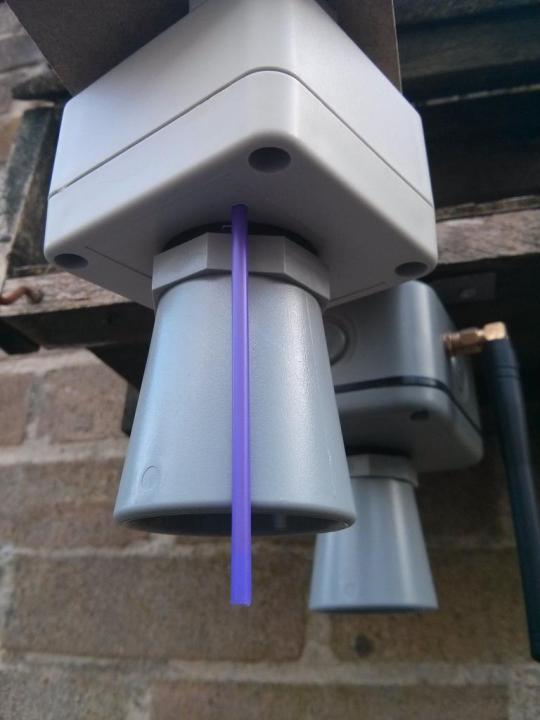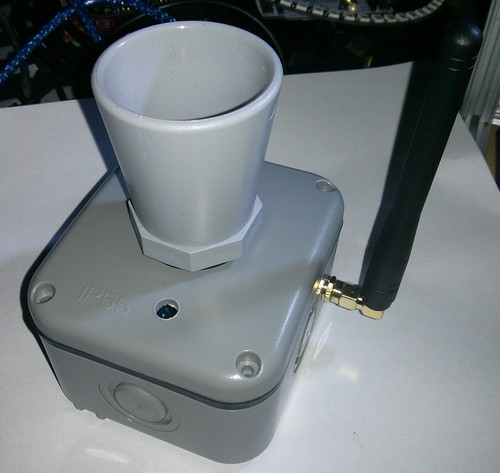Oxford Flood Network
Month
We’ve been busy installing sensors around Oxford. We have several on the Thames and Castle Mill Stream area and some under floors to detect rising water when the time comes. In fact it seems the only thing we’re missing now is water. The levels are very low at the moment, but we know how quickly that can change.
For updates and news or if you’d like to help by having a sensor then join our mailing list here z and we’ll send you a sneak preview of the flood map.
At Oxford Flood Network we’re building a citizen sensing project to collect detailed information on river levels around Oxford.
If you live in Oxford city, around the Thames, Cherwell, Oxford Canal or one of the many streams and think you could host an Oxford Flood Network sensor and gateway in your home then now’s the time to let us know.
We’re collecting a list of people who are happy to host a sensor (50mm x 50mm 100mm) and/or gateway device (90mm x 60mm x 26mm).
There is no cost to you for the devices, but you will need to help us keep it up and running by checking it periodically online and perhaps changing the battery once a year. We’ll use the sensors to create a detailed map of water levels around the city in higher detail than the Environment Agency’s existing sensors.

If you add yourself to the list of locations we can talk to you about hosting a gateway or sensor. Don’t worry, we’ll never share these details outside Oxford Flood Network without your consent.
For more information contact us at: [email protected]
or on Twitter: oxfloodnet or
come and see us at the
Oxford Startups Demo Night on Thursday May 14th
2015.

There’s an interesting blog update from Nominet (who are much
less sporadic in their blogging) talking about our work over the
winter, testing the flood sensors in real conditions. Read
about Winter Testing

Oxford Flood Network has been in the news as part of Nominet and Love Hz’s TV Whitespace pilot. Ben has been showing off the sensors and posing and making faces a lot for photocalls.
Andrew’s been working away in the background developing the sensor code and some of the backend. We’re working on improving the wireless range so we can get further from broadband.
We Have Wiki
There’s a new Wiki at which we’re using to collect unstructured information like system architecture, aims and guides.
Here’s a quick preview of the block diagram which explains the parts:

Parts List, Schematic and Gerbers
The PCB design files and a Bill of Materials are now on github which you can use to build your own sensors. The BoM is in Excel format at the moment, but we’ll try to keep things out of binary formats where possible. (PCB designs are EagleCAD format which must be binary.)
Gateway Device still needs work
There is a lot to do on the gateway device github area. A generic base SD card image with the latest Node-RED would be a start. Any help appreciated.
Feels like it’s coming together at last.
On Sunday Ben and Andy will be running a workshop on Oxford Flood Network at Wuthering Bytes in Hebden Bridge.
If you’re thinking of joining this workshop here’s a little extra information for you.
The Aim
Aside from the fun of participating in a citizen science project we want everyone to learn about deploying sensor networks - a critical part of the Internet of Things.
Oxford Flood Network is in the early days of development and we hope that bringing a number of volunteers together we can tap people’s skills to develop the overall flood network concept, making more flood networks possible with less trial and error.
What to Bring
Team 1 - Indoors - If you want to help assemble some sensors then please bring along
We’ll be experimenting with Node-RED and Raspberry Pi, so bring along:
Team 2 - Outdoors - We’ll be outside trying to find a suitable location for a sensor and doing some range testing before coming back indoors to help team 1.
Bring:
So far we’ve experimented with these, so if you have any handy bring it along
We may just be able to use the decking of the town hall, or put the sensor under a bridge. The more inconspicuous the better.
A Word About The Sensor Devices
We’re bringing some sensor kits along and we’d love it if you could help with some basic assembly or soldering. Unfortunately due to the cost of the components you can’t take them home with you unless you can pay £140 each.
We’d like to be able to give something back to the community for having us at Hebden Bridge so we’ll be donating a sensor to the cause. If you want to crowdfund a second one then we’re all for that.

Yawn Health & Safety…
The outdoor team members will need to sign a disclaimer to make sure none of the organisers are liable for accidents. As you might expect we’re not able to guarantee your safety, but we want to keep things simple and avoid potential incidents.
Fun!
After all that I will lighten up and remind you that this is meant to be a fun exploration of the challenges in building your own sensor networks.
I can’t wait!
On 15th-17th August we’ll be at Wuthering Bytes technology festival at Hebden Bridge where Ben & Andrew will be talking about and making the Oxford Flood Network.
If you’ve never been before, Wuthering Bytes is held in the picturesque and quirky town of Hebden Bridge, Yorkshire. It’s a combination of a technology festival and the Open Source Hardware Camp, an annual event run by OSHUG (Open Source Hardware Users’ Group) and thoroughly recommended for meeting people whose desks are covered in dev boards and Raspberry Pis.

On Saturday Ben will be exploring citizen sensing and creating your own evidence for your own issues such as flooding, air quality or noise.
On Sunday 17th Ben & Andrew will be running a workshop, so bring your wellies and we’ll split into two teams - one installing the wireless sensors in useful locations around the town, the other linking these up to the Internet using Raspberry Pi, Node Red, MQTT and lots of other sexy Internet of Things technologies.
If you want more information about the project, have a look at background or just get hacking on oxfloodnet
See you there!
Ben & Andrew
Since our first sensor back at Sushack in November 2013 we’ve learnt quite a lot about what works and what doesn’t work with a river sensor. Many of these lessons came from our test installation in Central Oxford.
It manifested in different ways but it’s fair to say moisture is our biggest enemy. The ultrasonic sensor was only rated for indoor use and when suspended above a stream would start reporting 22cm no matter what the actual water height was. Tests with a more expensive IP67 rated sensor have proved we can’t skimp on the transducer, but has put the cost up by £40 or so.
Shortly after we discovered this issue the entire device went offline. Not all IP55 rated cases are made the same and water got into the device after some very heavy rainfall. We now have a sturdy case with a seal and sensible holes.
The other issue was RF reception. The sensor was attached to a large steel girder under a bridge and this blocked much of the precious transmitted signal. During heavy rain ironically we believe it suffered from “rain fade” where the signal is disrupted by rainfall. To this end Andrew has added an external antenna. Which makes it look sexier too if I’m honest.

Finally, Andrew has created some instructions on how to assemble the latest version from the custom PCB design and some off-the-shelf boxes.
If you want to order an assembled device (approx £140) or a kit then email [email protected] and we’ll let you know when we can deliver them.
Down the side of the page you might notice I’ve updated the links to explain some of the background. We’re active on Github (software & designs) and also Twitter (oxfloodnet).
There’s also a PDF (oxfloodnet) which gives a full summary of the project.
This weekend Andrew and I worked on getting the new sensor installed.
Other improvements:
The mounting uses strong magnets to hold it in place instead of velcro strips, which is interesting, but not cheap. It has a piece of wire wrapped around it in case it becomes dislodged (we didn’t have any string). We need to work on the mounting but the priority was to get radio range and battery life tested.
For now it’s still in situ and stable. It’s currently tweeting heavily to a private account but a visualisation should be available soon. The main aim at the moment is to produce a viable outdoor device and then bring in all the data.
More updates coming soon.
The first prototype sensor is out in Oxford, near the Castle Mill Stream in a small parallel stream called Wareham Stream.
On Saturday the distance to the water level was 66cm, now it’s 64cm, so I hope this is a rise in the water level and not a sag of my fixings!
The radio reception has been a bit of a problem. According to the wire whip antenna is 1 quarter of the wavelength at 82.2mm. (868MHz) However, it’s buckled over inside the case whereas it should be vertical, perpendicular to the girder the sensor is stuck to. This can be resolved, but needs a hole drilled in the box to allow the wire to emerge. If I’m doing that I might get a better result with a half wavelength antenna at 16cm. At night the reception gets worse, which could be down to a baby monitor being turned on.
Andrew, another contributor to the project, is building an RSSI (Receive Signal Strength Indicator) test box, which allows us to wander around checking reception, rather than waiting 5 minutes for the next reading (or not, if it’s out of range).
More to come on this later.